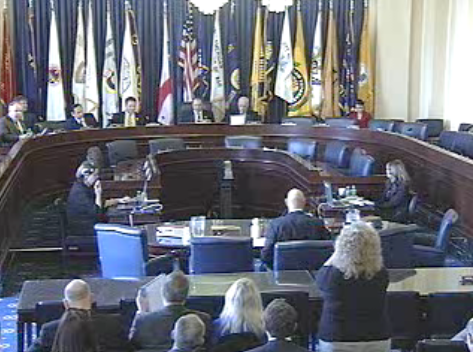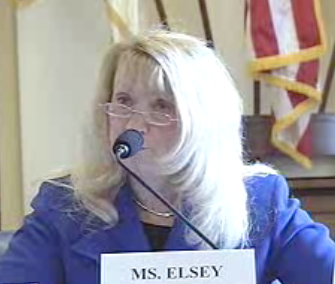
“It is no secret that veterans are facing difficult times finding and retaining good-paying jobs. Unemployment rates for veterans in some age groups significantly exceed the rates for non-veterans of the same age and that is just not right.”
Excerpt from Opening Statement by the Honorable Marlin A. Stutzman
Chairman, Subcommittee on Economic Opportunity
In early March, the Veterans’ Employment and Training Service’s Budget and State Grant Program held a hearing to review the 2012 budget for the Department of Labor’s Veterans Employment and Training Service, otherwise known in the veterans’ community as VETS.
Honorable Marlin A. Stutzman, Chairman, Subcommittee on Economic Opportunity, gave the opening statement and shared several alarming statistics:
“The media focuses on the 15.2% unemployment rate among veterans returning home from Iraq and Afghanistan, but in terms of sheer numbers, older veterans are facing rates of unemployment that often exceeds their non-veteran peers.”
“…the Bureau of Labor Statistics latest data shows that 725,000 or 63% of the 1,135,000 unemployed vets are 35-64 yrs old. Unfortunately, those veterans have little or no access to veterans’ education/training/retraining programs. They are also the group that tends to have the highest financial obligations like mortgages and paying for their children’s education.”
Three Panels then provided witness testimonies, including Bonnie Elsey, President-Elect, National Association of State Workforce Agencies (NASWA), and Senior Administrative Officer, Minnesota Department of Employment and Economic Development.

Bonnie Elsey begins her testimony.
Elsey’s testimony highlighted concerns around lack of funding to Disabled Veterans’ Outreach Program (DVOP) specialists and recommendations such as enhanced efforts to raise awareness of DVOP and Local Veterans’ Employment Representatives (LVER) programs among HR professionals. She pointed out that, “Approximately 640,000 veterans were served through the Disabled Veterans’ Outreach Program and Local Veterans’ Employment Representatives in fiscal year 2009. The DVOP and LVER programs have been successful in assisting Veterans to become gainfully employed,” she explained.
An additional recommendation from NASWA shared by Elsey included Congressional legislation maintaining the same definition of a veteran for reporting purposes for all Federal programs (Wagner-Peyser, JVSG programs, Workforce Investment Act, etc.). Elsey also suggested for the USDOL to utilize VetCentral, an online network connecting employers and state workforce agencies, to provide federal contractors jobs for states to assist eligible veterans.
She also discussed concerns. For example, despite recent improvements to the Federal Contractor Job Listing (FCJL) process, NASWA member states are still unable to identify all federal contractors and subcontractors subject to 41 CFR Part 60-250 and 41 CFR Part 60-300.
Her testimony concluded stating that NASWA and it members “remained dedicated to improving the efficiency of the labor market and its labor exchange function, and improving the employment opportunities of our nation’s Veterans,” and that they are willing to assist the Subcommittee and the U.S. Department of Labor in any way possible to improve services to Veterans.
The full testimony of Elsey and all panels can be found on the House Committee on Veteran’s Affairs site.
DirectEmployers Association and NASWA formed an alliance in March 2007 to provide an employer-funded, jointly-administered National Labor Exchange. We are very proud to have this alliance to help these programs, such as veteran employment, continue to expand and better serve the public.
For some related information, visit Jolene’s Take blog, authored by Jolene Jeffries, VP – strategic initiatives for the DirectEmployers Association.


I couldn’t have really asked for a more rewarding blog. You are ever present to provide excellent advice, going on to the point for simple understanding of your readership. You’re undoubtedly a terrific expert in this subject matter. Thanks a lot for being there for people like me.
I simply wanted to let you know how much my spouse and i appreciate every little thing you’ve provided to help improve the lives of individuals in this subject material. Through the articles, I’ve really gone via just a beginner to an expert in the area. It truly is truly a gratitude to your endeavours. Thanks